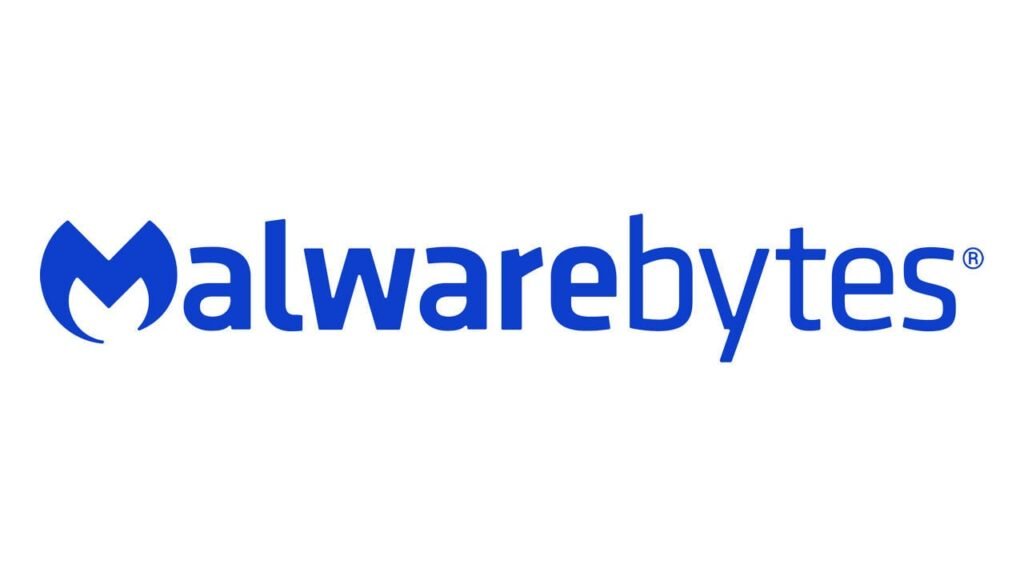Did you know that global cybercrime is expected to hit $10.5 trillion a year by 2025? As threats grow, companies are looking at biometric security for better protection. The future of biometric security is not just about making authentication better. It also brings up big questions about privacy and ethics.
Technologies like fingerprint scanning and facial recognition will play a big role in verifying identities. They will make security better but also bring new challenges in cybersecurity, privacy, and ethics. This article will help you understand the risks and benefits of biometric authentication. It aims to guide you through the complex world as this technology keeps evolving12.
Key Takeaways
- • The future of biometric security is marked by rapid technological advances and widespread adoption.
- • Biometric authentication offers enhanced security and convenience but raises privacy and ethical concerns.
- • Continued growth in biometric solutions is expected across multiple sectors, including finance and healthcare.
- • Multimodal authentication combines various biometric traits for increased security.
- • Companies must address challenges such as data breaches and compliance with regulations for effective biometric use.
The Essentials of Biometric Security
Biometric security uses your unique traits like facial recognition, fingerprint scanning, and voice patterns. It's much better than old password systems, making it harder for hackers to get in. For example, banks are adding biometric checks to their apps, making transactions safer3.
Fingerprint scanning is a top choice for many, used in banking and healthcare4.
Companies are using biometrics to make logging in and tracking work easier. Id-Time from RecFace makes checking in at work simple and accurate3. In hospitals, biometrics keep electronic health records safe, only letting the right people see them4.
Today's phones have cool biometric tech like facial and fingerprint scans. This makes unlocking your phone easy and safe3. For buying things online, biometric payments use fingerprints for a smooth, secure process3.
Biometrics are also changing how we lock our homes. They offer personal access without the need for keys3. Biometric systems use unique human features like voice and face, making everything more secure and user-friendly5.
Understanding Biometric Authentication
Biometric authentication uses unique biological traits like facial features, iris patterns, fingerprints, and voice to identify you6. In today's digital world, we need secure ways to identify ourselves because passwords and PINs can be easily hacked6. Biometric methods are more secure, with accuracy rates of 90-99%, making them ideal for banking, healthcare, and government6.
Biometric systems make access control easier and improve user experience by verifying identities quickly6. Since the late 19th century, biometrics have been used to identify people, starting with body measurements7. Today, iris scans and voice recognition can accurately identify you with an average accuracy of 90% and above7.
However, biometric systems have their challenges, like false positives if fingerprints are dirty or smudged6. Also, setting up these systems can be expensive, with some companies spending up to $120 on password resets7. As biometric data rules change, it's crucial to protect sensitive information6.
The Future of Biometric Security: Risks and Benefits
The world of biometric security is changing fast. It's filled with risks and benefits that we need to look at closely. As more places use biometric systems, it's key to understand how they affect security and how users feel about them.
Enhanced Security Measures
Biometric systems offer enhanced security because they use unique physical traits. This makes it hard for people who shouldn't be there to get in. It's especially important in places like banks and hospitals, where keeping identities safe is a big deal.
For example, biometrics help make online banking and patient ID checks safer8. But, there's a big worry about data getting stolen. Last year, over 422 million records were hacked9. Laws like GDPR and CCPA say biometric data is very sensitive, so we need to protect it well9.
Convenience and User Experience
Biometric solutions also make things easier for users. Imagine going through airport security in just seconds because of facial recognition9. It's a big improvement over remembering passwords or carrying ID cards.
Also, new tech like AI and machine learning are making these systems better and more reliable. They're keeping up with what users want108.
Popular Biometric Modalities
In recent years, biometric modalities have become more popular. They are used to improve security and make things easier for users. Knowing about these modalities helps us see how they work and what they can do.
Fingerprint Scanning
Fingerprint scanning is well-known for its reliability. It's used on many devices and services. It checks your fingerprints to make sure it's really you.
In work settings, fingerprint tech can save money. It cuts down on the need for password resets. This can save a company about $5.2 million each year on password issues11.
Facial Recognition
Facial recognition is getting more popular, especially in phones and security systems. It's easy and fast, making it great for digital transactions. Mastercard is using it for payments, making things safer and more convenient for customers11.
Banks also see its value. They use it to keep customers' information safe from identity theft12.
Iris and Vein Pattern Recognition
Iris recognition is very accurate and secure. It's often used in places like border control. Vein pattern recognition is new and uses vein patterns for verification.
These methods work well together. They offer strong security for many industries, like hotels and travel11. Using different biometric sensors together can make security even better. This ensures that identities are checked carefully12.

Emerging Trends in Biometric Technology
The world of biometric technology is changing fast. New trends are changing how we think about security. The global biometrics market was worth about $39.62 billion in 2021. It's expected to grow to $136.18 billion by 2031, with a growth rate of 13.3% from 2022 to 203113.
Industries like banking, finance, and healthcare are using biometric solutions more and more13.
Behavioral biometrics is a big trend. It looks at how we act, like our typing and mouse movements. This helps keep users safe without making things too hard for them14.
Contactless biometrics are key in mobile tech, especially for payments. The need for safe, touch-free methods grew during the pandemic. Facial recognition is now a top choice13.
AI is also making identity checks better. It uses new ways to check who you are, like your heartbeat and DNA14.
But, there are challenges too. Spoofing and deepfakes are becoming problems. They make it hard to keep identities safe14.
As people worry more about security, biometric tech keeps getting better. It meets what people want and need, making our digital world safer.
Data Privacy and Ethical Concerns
Biometric systems are becoming part of our daily lives, raising big ethical concerns and data privacy issues. With more people using biometric authentication, it's key to handle sensitive data responsibly.
Regulating Biometric Data
Rules are vital for keeping biometric data safe. This tech, like fingerprint and facial recognition, is used in finance and healthcare. Following privacy laws is crucial to protect people's rights and prevent data breaches15.
In 2023, 46 percent of travelers used biometrics at airports. This shows how common it's becoming and the need for strong rules16. As biometric tech grows, we must focus on regulating biometric data to tackle privacy worries.
Consent and Transparency Issues
Getting consent is key in biometric data use. Since these systems collect a lot of personal info, it's important to be open about how data is used and stored. This builds trust in these systems17.
The risk of data misuse is a big problem. Biometric data can be used for fraud, creating fake identities. It's important to find a balance between tech progress and ethics to avoid misuse. Studies have shown that altering biometric data can create fake identities, raising big questions about data privacy and ethics in this field17.

Cybersecurity Threats to Biometric Systems
Biometric systems are becoming more common, but they face big security risks. Spoofing and deepfake technologies are major threats. Spoofing can trick biometric checks, while deepfakes can create fake identities that fool facial recognition. These issues show how vulnerable biometric systems can be, putting user safety and privacy at risk.
Risks of Spoofing and Deepfakes
Biometric checks are generally safer than old methods, but they can still be hacked. Spoofing can fake fingerprints and faces, letting unauthorized people in. Deepfakes can change images and videos to fake someone's identity. These tricks make biometric systems less reliable and trustworthy.
Challenges of Continuous Authentication
Continuous authentication keeps checking who you are while you're online. But, it's hard to keep up with user changes without losing security. For example, how do you tell real user actions from bad ones? It's all about finding the right balance between safety and ease of use.
| Threat Type | Description | Impact |
|---|---|---|
| Spoofing | Using fake biometrics to gain access | Unauthorized entry into secure systems |
| Deepfakes | Manipulated visuals that impersonate individuals | Compromised identity verification |
| Behavioral Changes | Alterations in user interactions affecting authentication | Potential false rejections or denials of service |
To tackle these threats, we need better tech and security rules. We must make sure users know their biometric data is safe from new dangers18.
AI's Role in the Evolution of Biometric Security
Artificial Intelligence (AI) is changing how we use biometric security. It makes systems more accurate and better at recognizing users. For example, AI helps facial recognition by looking at lots of data, making it more precise19.
Machine learning, especially CNN, has improved fingerprint recognition. It helps in breaking down, classifying, and extracting features from fingerprints20. This makes biometric systems more reliable, able to spot unique traits like iris patterns and voices. AI can quickly match iris patterns, solving issues like pupil size changes and occlusions19.
The healthcare and finance sectors are quick to use AI in biometric security. They use it for safe customer checks and remote health monitoring21. The market for new biometric tech is growing fast, expected to hit USD 94.23 billion by 202821. Biometric systems are getting better at stopping unauthorized access, keeping identification safe as threats grow.

In short, AI in biometric security lets systems detect threats and follow data protection rules. It allows for constant monitoring and quick checks, keeping biometric authentication safe and addressing privacy issues19.
The Healthcare Industry and Biometric Solutions
The healthcare sector is changing with biometric solutions. These technologies, like fingerprint and facial recognition, help fight fraud. They verify patient identities during enrollment and when accessing digital health data22. Facial recognition also checks if claims are from the right person22.
Hospitals use biometric solutions to make it easier to access electronic health records. This lets approved clinicians get to patient data without card keys or passwords22. The Geisinger Medical Center saw less waiting and fewer ID mistakes with biometric systems23.
Biometrics also help avoid duplicate health records, keeping all info in one place22. They make data more accurate by avoiding mix-ups with similar patient info22. This reduces errors and fraud risks23.
Healthcare providers work better with quick access to health records through biometrics22. As telemedicine grows, biometrics keep remote patient monitoring safe and secure23.
The global biometrics market in healthcare is growing fast. This is because of the need for strong security against data breaches23. Patient registration errors cause 64% of misidentifications, showing the need for reliable ID methods24.
Conclusion
As we look ahead, it's key to see both the good and the bad of biometric security. Technologies like fingerprint and facial recognition make things safer and easier. They help stop unauthorized access and identity theft2526.
But, there are big worries about privacy and data safety. These issues make it hard to build trust between users and companies.
Biometric tech is changing how we do things in finance and healthcare. These areas need strong security to keep data safe26. Yet, a big drop in trust is seen; only 5% of U.S. people trust tech companies with their biometric data in 202427.
Security steps like Multi-Factor Authentication (MFA) and encryption are key to keeping biometric data safe2725,).
In short, knowing about biometric tech is important for keeping safe. It helps us make smart choices about security. By understanding the challenges, we can use biometric systems wisely and stay protected2725,).




